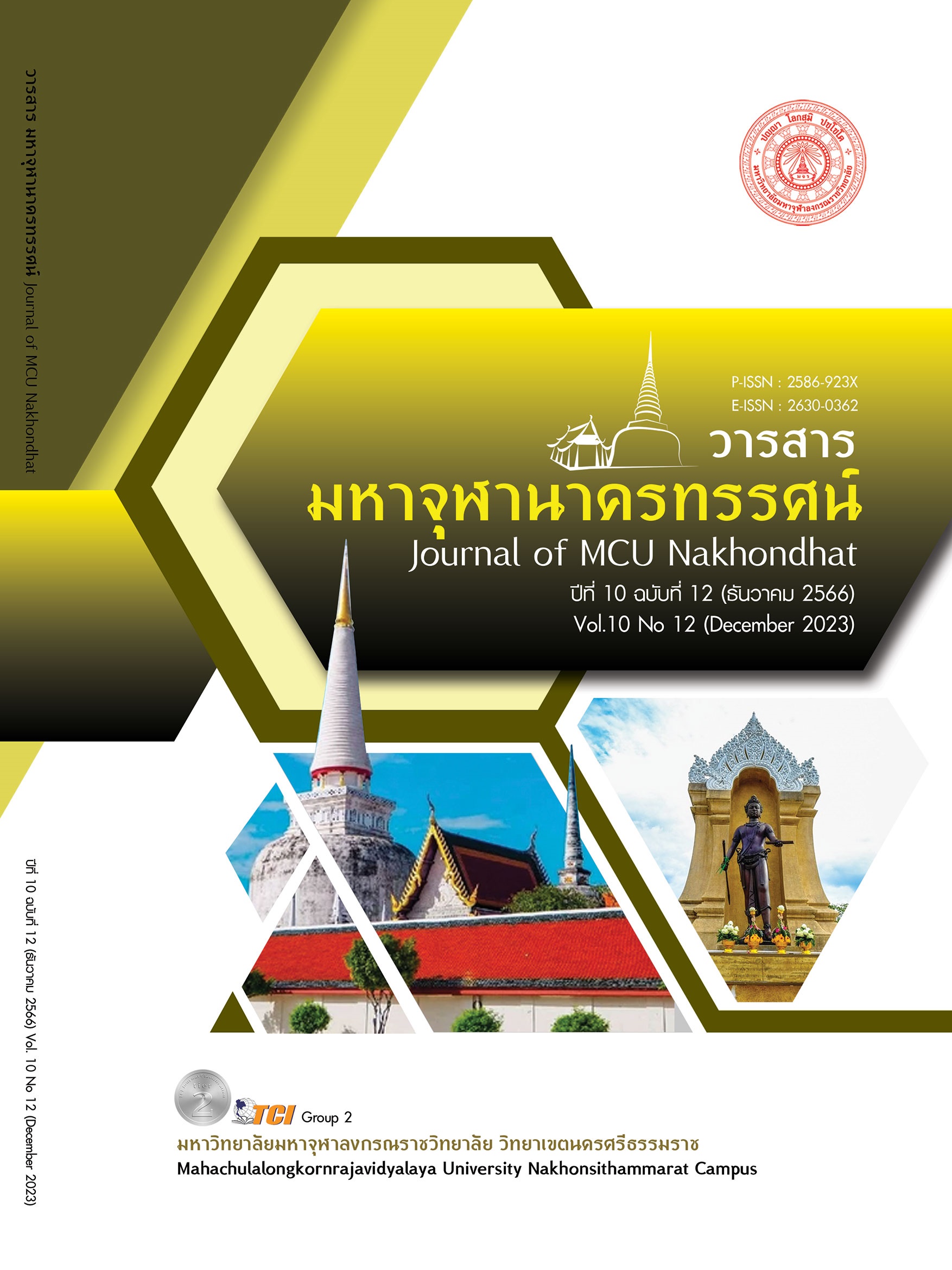GUIDELINES FOR CREATING A CREATIVE DESIGN PROCESS TO ENHANCE SUSTAINABLE ATTITUDES
Main Article Content
Abstract
This research aims to 1) Study and enhance the sustainable attitude model of natural resources and environment. 2) To find guidelines for creating a creative design process to enhance sustainable attitudes. This research is a research & development, collecting knowledge and meaning of attitudes in many dimensions, study theory of intellectual development and case analysis of art and design process of environmental conservation, focusing on applying the theory of intellectual development and developing of creating a creative design process to link with awareness experience in of natural resources and the environment conservation and sustainability. The designer can apply guidelines for creating a creative design process to enhance sustainable attitudes for creative work and link with a person's perceptual experience. The result found that 1) The design process to enhance sustainable attitudes toward natural resources and the environment is 1.1) Creating sensory perception to changing attitudes. 1.2) Creating a reaction experience between users and the environment to convince them to understand the essentials of natural resources and the environment. 2) The guidelines for creating a creative design process to enhance sustainable attitudes are that the designer can communicate by designing visual elements that express allegorical symbols with precise shapes or universal shapes to convey ideas and suggestions. It should develop guidelines for enhancing awareness that is easily accessible, create knowledge and understanding and awareness of the importance of sustainability, which is a part of driving thoughts and attitudes that lead to learning, and anticipate cooperation in adjusting behavior and lifestyles for widespread sustainability.
Article Details

This work is licensed under a Creative Commons Attribution-NonCommercial-NoDerivatives 4.0 International License.
References
จักรกฤษ เดชพร. (2563). การรับรู้ภาพลักษณ์องค์กรด้านสังคมและสิ่งแวดล้อมในมุมมองของผู้บริโภค กรณีศึกษา บริษัท อำพลฟูดส์โพรเซสซิ่ง จำกัด. ใน วิทยานิพนธ์มหาบัณฑิต สาขาาวิชาการจัดการนวัตกรรมทางธุรกิจ. มหาวิทยาลัยศิลปากร.
สถาบันวิจัยเศรษฐกิจป๋วย อึ๊งภากรณ์. (2566). การปรับตัวต่อการเปลี่ยนแปลงสภาพภูมิอากาศ. เรียกใช้เมื่อ 30 ตุลาคม 2566 จาก https://www.pier.or.th/abridged/2023/12/
สมาคมพัฒนาคุณภาพสิ่งแวดล้อม. (2566). ปรับทัศนคติใหม่ สู่ชีวิตที่ดีกว่า เพื่อโลกที่ยั่งยืน. เรียกใช้เมื่อ 30 ตุลาคม 2566 จาก https://adeq.or.th/mindset-for-sustainable/
สำนักงานนโยบายและแผนทรัพยากรธรรมชาติและสิ่งแวดล้อม. (2559). แผนการปรับตัวต่อการเปลี่ยนแปลงสภาพภูมิอากาศแห่งชาติ. เรียกใช้เมื่อ 30 ตุลาคม 2566 จาก http://www.oic.go.th/FILEWEB/CABINFOCENTER38/DRAWER027/GENERAL/DATA0000/00000852.PDF
อัศมน ลิ่มสกุล. (2566). การรับมือสภาวะสุดโต่งทางสภาพภูมิอากาศของไทย. เรียกใช้เมื่อ 20 สิงหาคม 2566 จาก https://tdri.or.th/2015/10/extreme-weather/
อำนาจ เจริญศิลป์. (2544). การจัดการทรัพยากรธรรมชาติและสิ่งแวดล้อม. กรุงเทพมหานคร: โอเดียนสโตร์.
อุษณีย์ วรรณจิยี. (2536). การเปรียบเทียบความเข้าใจในการอ่านภาษาอังกฤษ และเจตคติต่อการเรียนภาษาอังกฤษของนักเรียนชั้นประถมศึกษาปีที่ 6 ที่ได้รับการสอนอ่านโดยใช้เทคนิคการสร้างไดอะแกรมกับการสอนอ่านตามคู่มือครู. ใน วิทยานิพนธ์มหาบัณฑิต สาขาบริหารการศึกษา. มหาวิทยาลัยศรีนครินทรวิโรฒ ประสานมิตร.
Kirsi Niinimaki. (2014). Green Aesthetics in Clothing. Artifact, 3(3), 1-13.
National Geographic. (2023). มนุษย์กับความยั่งยืนทางสิ่งแวดล้อม มีความสำคัญอย่างไรในยุคปัจจุบัน. Retrieved August 20, 2023, from https://ngthai.com/science/46163/human-and-environmentalsustainability/
Uthai Moolpak. (2022). ปรับพฤติกรรมในชีวิตประจำวันเพื่อรู้เท่าทันภาวะโลกร้อน. Retrieved August 30, 2023, from https://actionforclimate.deqp.go.th/news/4264/


